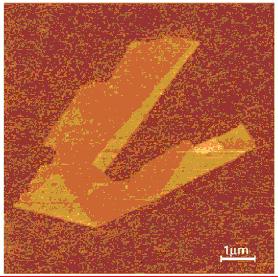http://lenta.ru/news/2010/10/05/nobelphys/

Discovery of graphene
In 2004, a group of physicists from Manchester University, UK, led by Andre Ceim and Kostya Novoselov, used a very different and, at first glance, even naive approach to obtain graphene and lead a revolution in the field. They started with three-dimensional graphite and extracted a single sheet (a monolayer of atoms) using a technique called micromechanical cleavage13 14 (Fig. 2). Graphite is a layered material and can be viewed as a number of two-dimensional graphene crystals weakly coupled together- exactly the property used by the Manchester team. By using this top-down approach and starting with large, three-dimensional crystals, the researchers avoided all the issues with the stability of small crystallites. Furthermore, the same technique has been used by the group to obtain two-dimensional crystals of other materials13, including boron nitride, some dichalcogenides, and the high-temperature superconductor Bi-Sr-Ca-Cu-O. This astonishing finding sends an important message: two-dimensional crystals do exist and they are stable under ambient conditions.
Amazingly, this humble approach allows easy production of large (up to 100 urn in size), high-quality graphene crystallites,
Общие сведения о свойствах графена c подробным изложением работ лауреатов можно найти в обзоре graphene_rev.pdf
Одну из оригинальных статей создателей графена можно прочитать здесь
graphene_o.pdf



